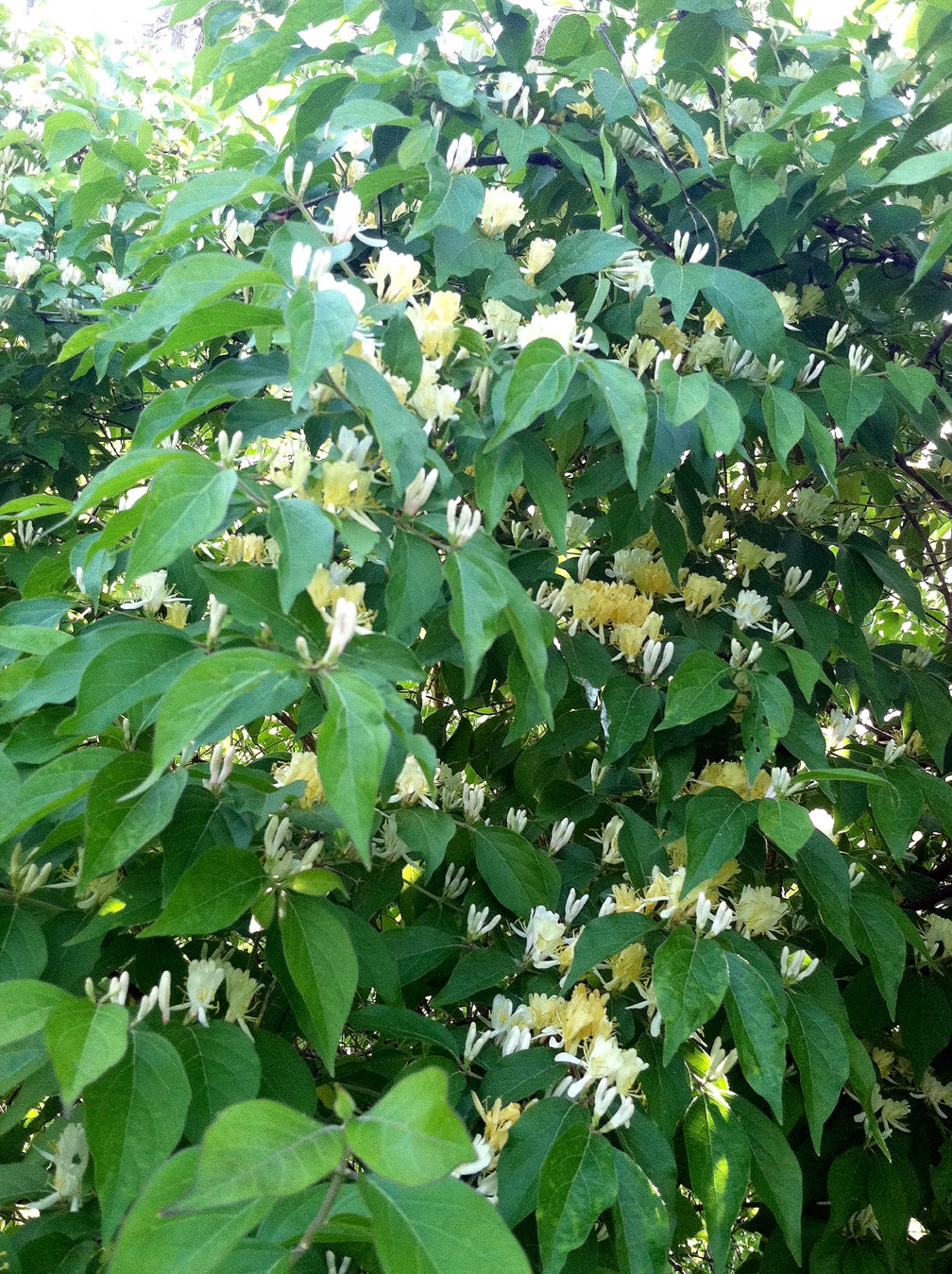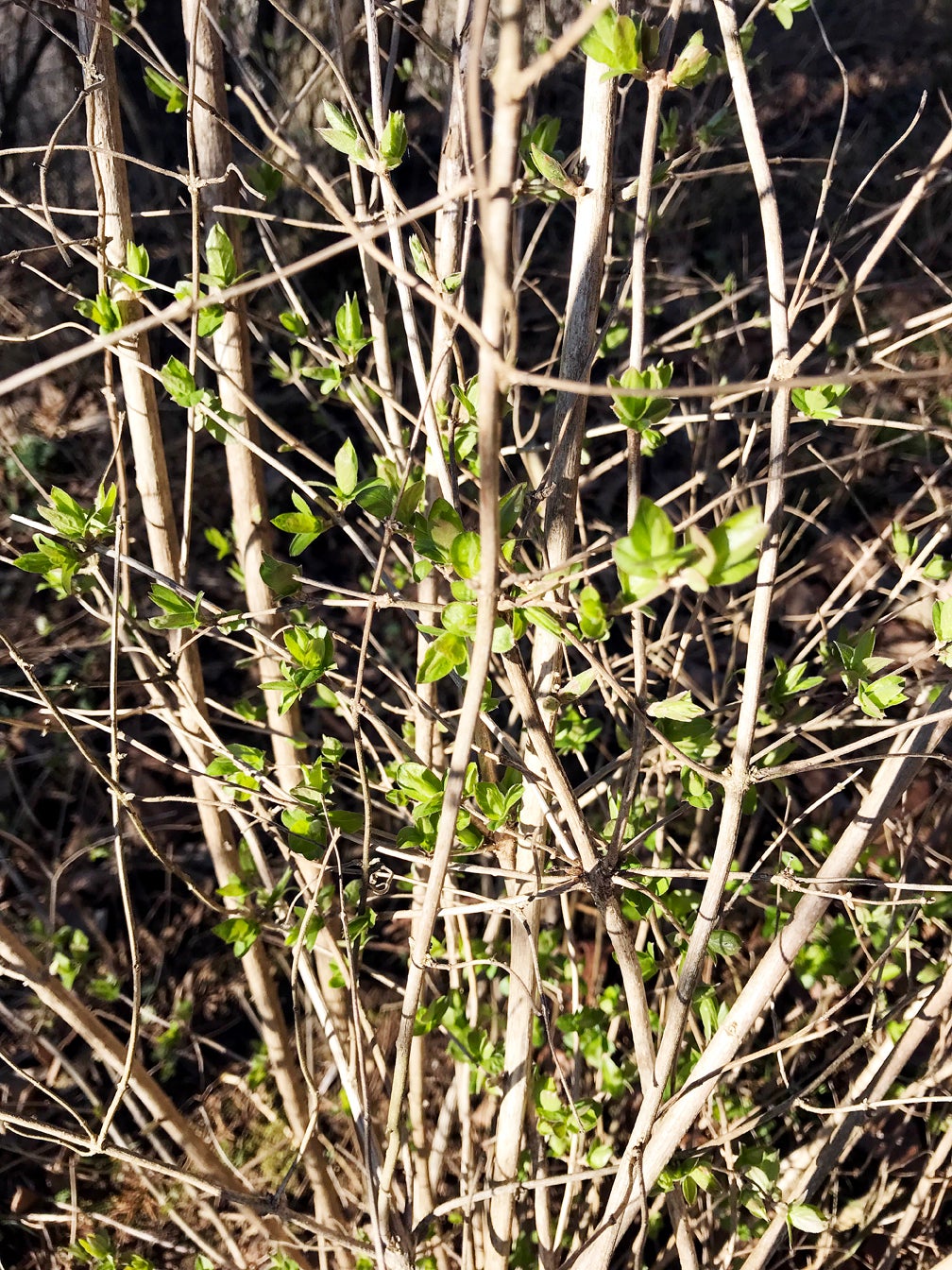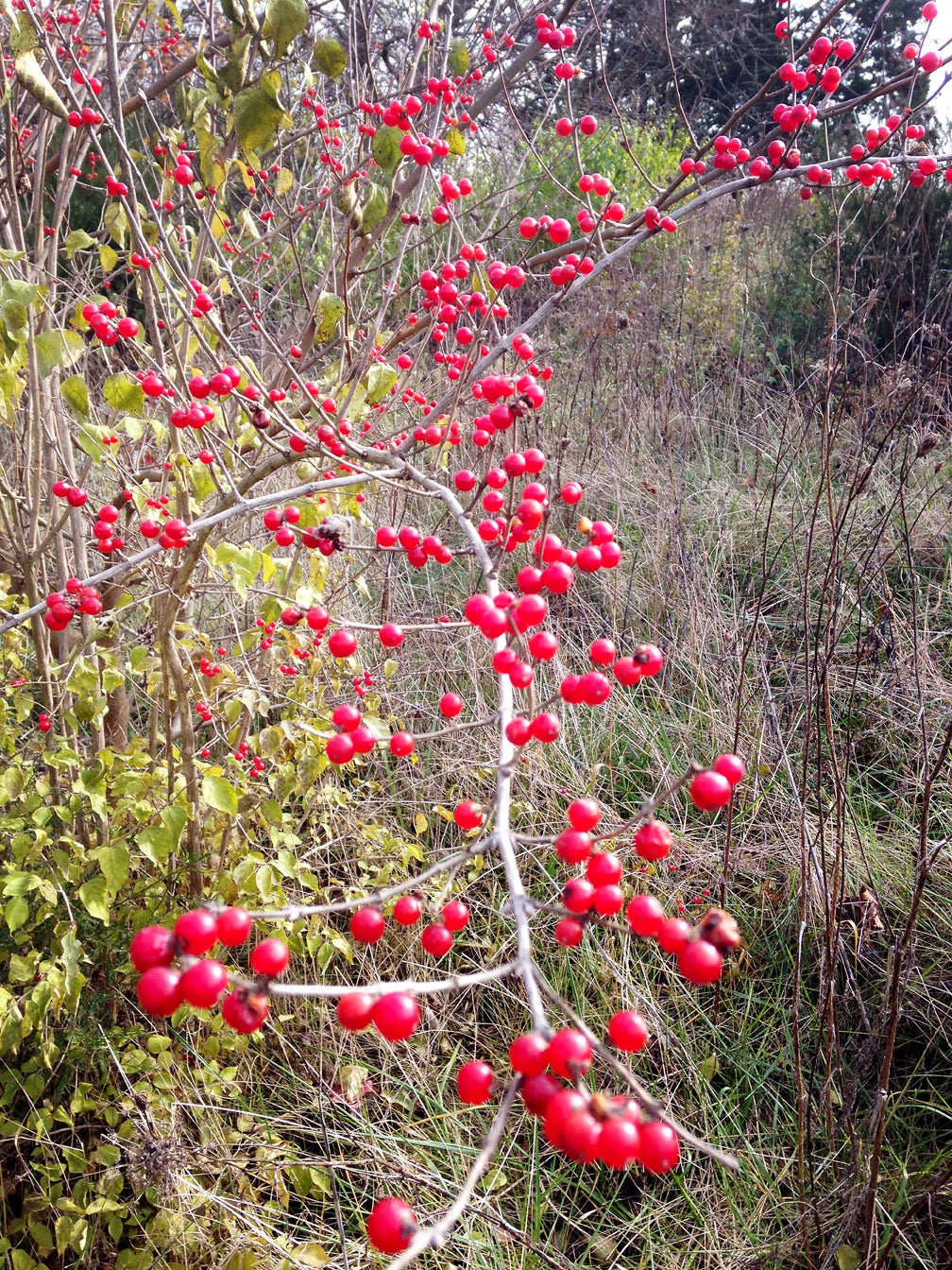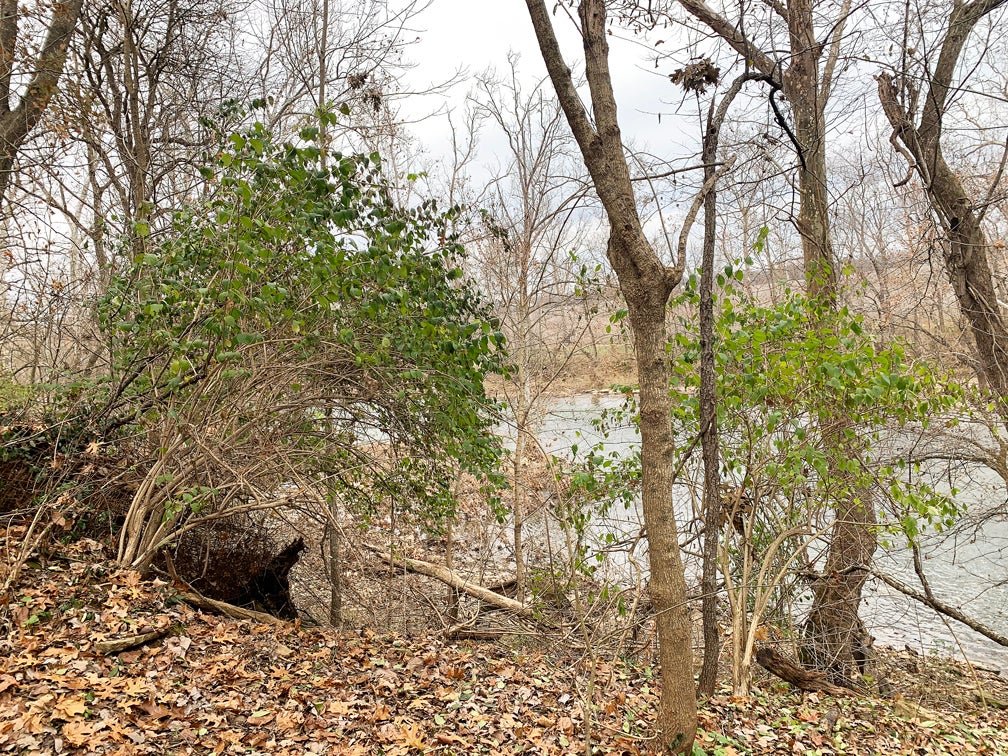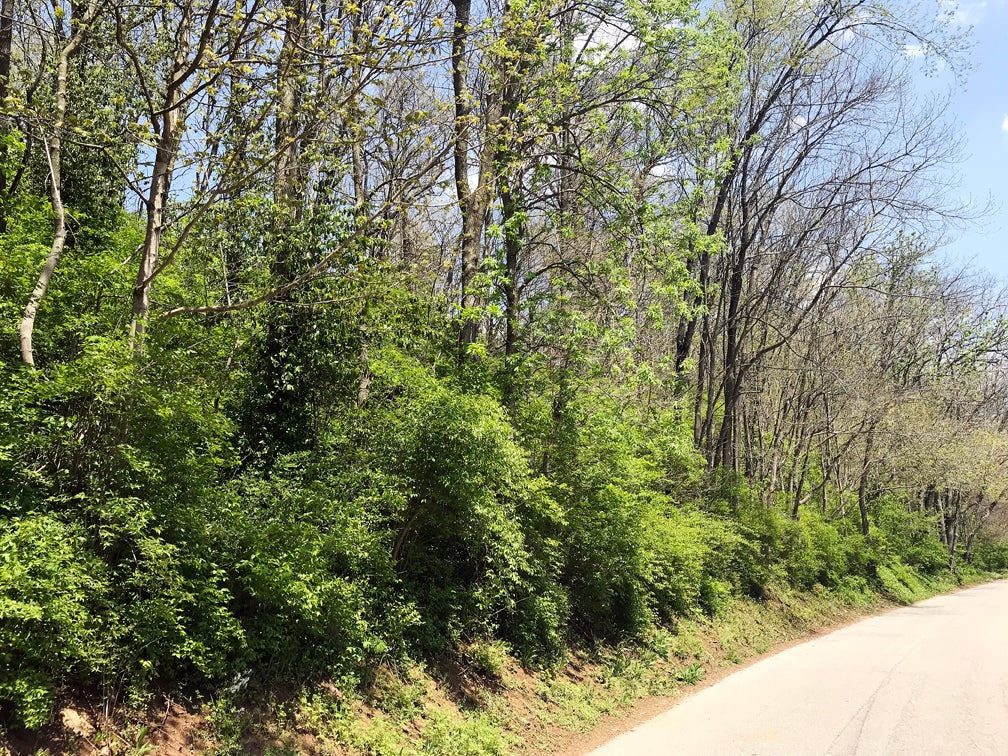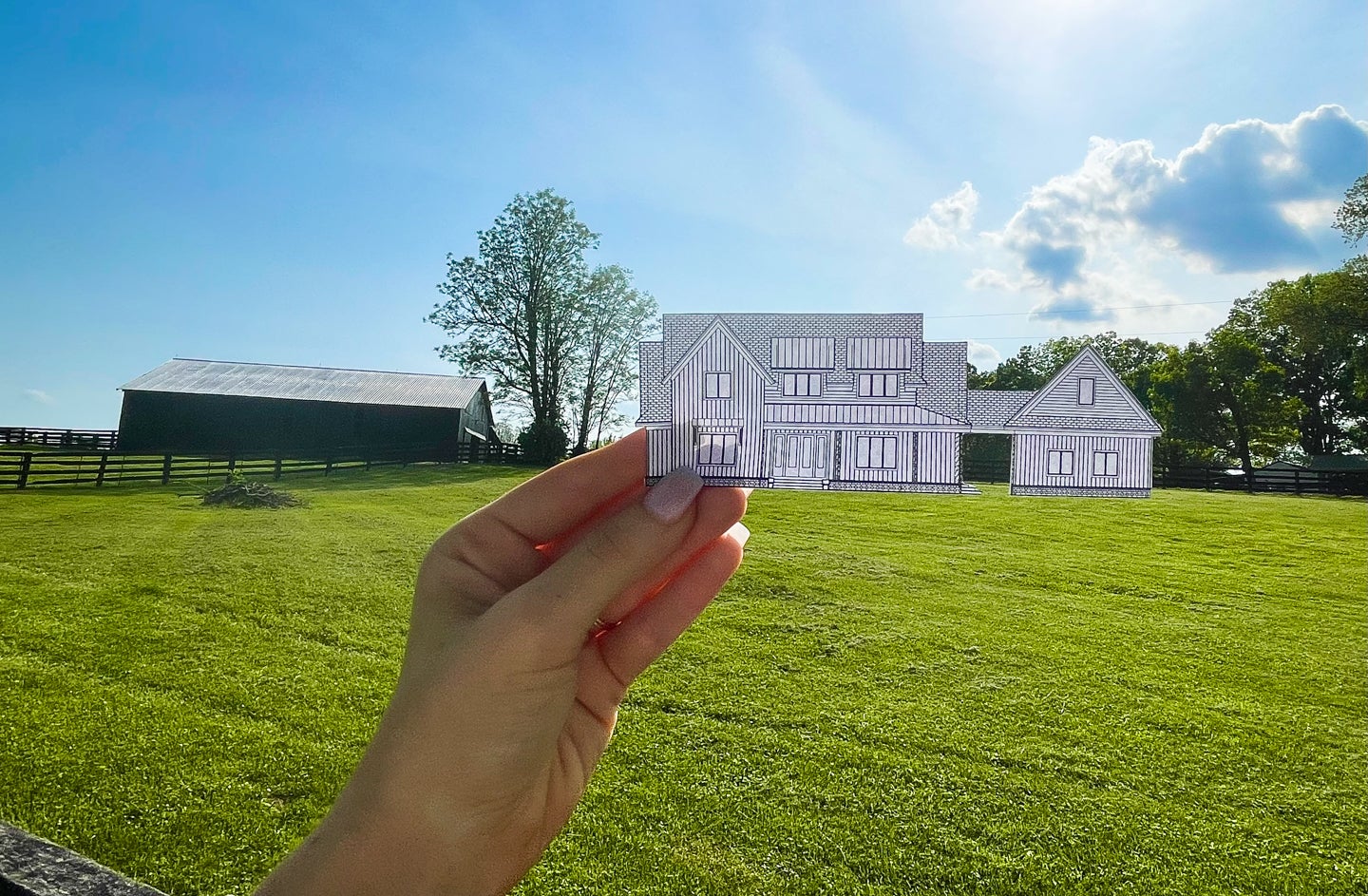One thing I love about Frankfort are our vast amount of woods, but if you to hike, or even just drive around, you’ll begin to notice one plant taking over forests, roadsides, trails, fencerows and more.
Bush honeysuckle is an extremely invasive plant species capable of dramatically reducing native plant diversity that is much needed for pollinators, insects and other wildlife. Native to eastern Asia, bush honeysuckle was primarily planted for erosion control, but quickly escaped cultivation. Because it can grow under moderate light and tolerate a range of conditions, Lonicera spp, is now an ecological threat in every state in the country.
The shrub leafs out earlier in the spring (it’ll be the first green you see in the woods) and keeps its leaves later in fall (the last green you’ll see) than most natives, making it easy to identify. This is also one reason for its invasive classification as it has a competitive advantage over other natives and grows so densely that it shades out everything beneath it.
The bushes have long arching branches, 1-3.5-inch long dark green leaves, grayish-brown stems that have short hairs on young stems and broad, striped-like grooves on older stems. The flowers are very fragrant, tubular and appear in pairs — the one feature that makes it nostalgic and appealing. Mostly red fruits are produced mid-summer through early fall, which have very little nutritional value for wildlife.
Exotic honeysuckle has many negative impacts including:
- Crowding out and shading native plant species, inhibiting survival and growth
- Fruits offer poor nutrition for birds as compared to other native alternatives
- Increases exposure to tick-born infections
- Changes in bird diversity, decreased abundance of birds
- Decreases water flow available to streams and ponds where heavily invaded
- Habitats are altered by the heavy leaf litter left by honeysuckle that breaks down much faster than its native alternatives creating a breeding ground for decomposers
There are several options for controlling bush honeysuckle. Where the infestation is present determines the best way of controlling it. Options include prescribed burning, hand pulling of seedlings and cutting and herbicide treatments. When cutting large shrubs, scarify at the cut and carefully paint with glyphosate concentrate.
Check all cuts again in fall to make sure they haven’t sprouted again and if so, treat again. It is easiest to control in early spring or late fall when conditions are ideal for locating it based on its early and late foliage habits. Put honeysuckle and general invasive removal on your spring and fall to do’s for 2019! With any invasive removal, stay diligent.
Unfortunately this species is still sold in nurseries as an effective ground cover with very pleasant smelling flowers. Usually, however the plant existed on your property long before you arrived. If you like the screening it provides, think about removal and alternatives.
Before deciding to add or keep this extremely invasive plant to your landscape consider these native alternatives that also offer fruit for wildlife, fall color and beautiful blooms:
- serviceberry
- chokeberry
- summersweet/clethra
- dogwood
- witch hazel
- spicebush
- winterberry
- arrowwood viburnum
- buttonbush
- Virginia sweetspire
Remember, the damage bush honeysuckle does to local ecosystems far outweighs the few positive qualities it has.
Andrea Wilson Mueller, APLD is a native Frankfortian and 2003 magna cum laude graduate of the University Of Kentucky College Of Design with a Bachelors of Arts in Design. She was raised in the horticulture industry by her dad and is the first and only APLD certified landscape designer in the state of Kentucky. She specializes in residential and commercial outdoor and native garden design.

